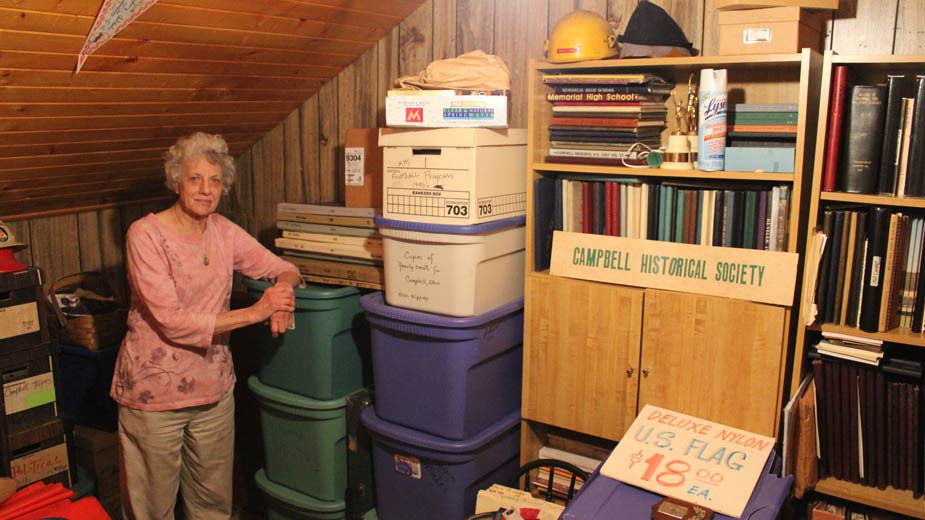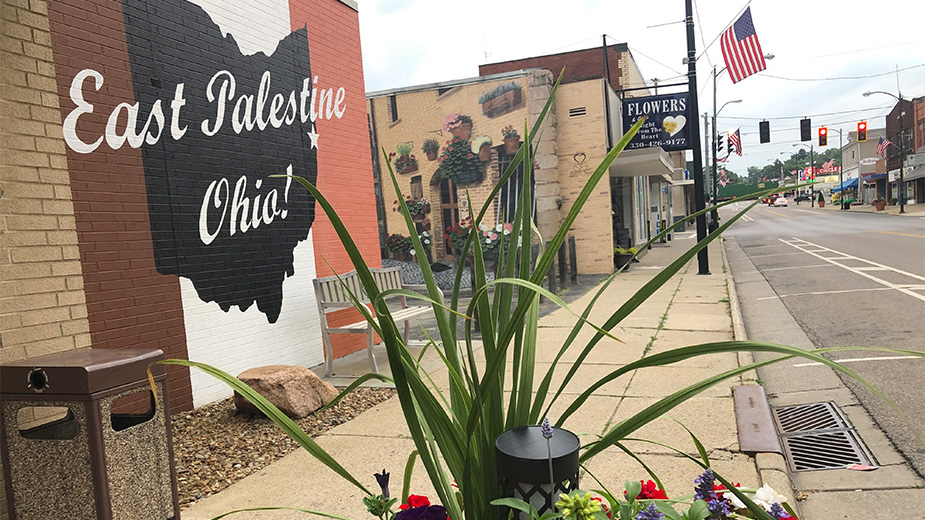They Collect Community Memories
YOUNGSTOWN, Ohio — A few major themes dominate the overarching story of the Mahoning Valley: the rise and fall of its steel industry, a community of immigrants from many lands and a blue-collar work ethic.
But each town in the Valley was, and is, different. Campbell, established as East Youngstown, was built for workers of The Youngstown Sheet & Tube Co., while Poland had been laid out more than a century earlier as “Town One, Range One” of the Connecticut Western Reserve. The immigrants who settled Struthers were different from those who settled Niles.
“Every town has a story. History tells a story that’s our story,” says Linda Skrinyer, secretary of the Struthers Historical Society. “It was the little towns feeding the big towns. It was the people from the small towns going to work in the steel mills. It was the workers from every town that built the Mahoning Valley.”
In many communities, their history societies have taken on the challenge of building and preserving their towns’ pasts, often with just a few members conducting the research, collecting artifacts and maintaining a museum.
“They are collecting their own community’s memories and doing educational programs,” says Mahoning Valley Historical Society Executive Director Bill Lawson. “And they are almost entirely volunteer-driven organizations, so there’s dedication.”
The impact of local historians and societies, he continues, goes beyond serving as keepers of documents and photographs, Lawson adds. Often, the societies work out of historic buildings, keeping them from falling into disrepair or being demolished.
The Canfield Historical Society’s headquarters are the former Mahoning Dispatch building. The Poland Historical Society is based in an old one-room schoolhouse. In Niles, the city society has converted the Ward-Thomas House into a museum.
“With this, you can put a face to all of the history. You can see that they slept in beds, got up and went to work just like you do,” says Audrey John, curator of the Niles museum.
Before the Niles Historical Society took over the building in the late 1970s, the city mulled several options on what to do with the house and property, which had been donated by the descendants of the Thomas family. Among the options, John says, was razing the house and turning the space into a park.
As part of an agreement with the city, the society maintains the property and operates the museum while the city pays for the building’s water and heat. It’s not an inexpensive endeavor, the curator notes. The annual cost of running the museum and surrounding property runs about $11,000.
It’s here where almost all history societies say they face the biggest challenges. Fundraising is their second-highest priority, just behind the preservation of items from their towns’ histories.
“We do everything we can to get people in here,” Skrinyer says. “We have Alexander Frankfort Day when we’ll have the Boy Scouts and Civil War re-enactors doing demonstrations, along with tours of the house. And we do other events.”
Alexander Frankfort, whose house is now the museum for the Struthers society, was the city’s last surviving veteran of the Civil War, fighting in 27 battles. The museum includes items from the Frankfort family, the nearby Hopewell Furnace and a collection of documents and pictures.
“There’s a lot of history in this little town,” she says. “Everyone focuses on the steel mills, but we were here far before then.”
At the small history societies, donations are always accepted but rarely solicited. During her time with the Niles society, John says (and that dates back to shortly after its birth), the group has never asked for any particular items to be donated, relying instead on residents to bring in items.
Among the highlights of the Ward-Thomas House tour are the dresses of the nation’s first ladies and displays on President William McKinley, but not everything on display in the Ward-Thomas House has great significance. One display features dozens of old toys, some in excellent condition, others with nicks and scratches.
“Someone just decided to give them to us rather than throw them out,” John explains. “Maybe someone will come in here and see something that they used to play with when they were growing up and it’ll bring back those memories.”
Beyond the challenges of running the museums and keeping their rosters of members stable, passion about the past drives these historians.
In Campbell, Florence Galida has kept thousands of pictures, documents, yearbooks and newspapers that date to the 1930s.
Her collection began with her father, Michael Katula, a longtime member of city council, who brought documents home and, when he had read them or they were no longer needed, set them aside to be thrown away.
“I always loved looking at [the documents he brought home],” Galida says. “My father would bring them home and our relatives would borrow them or my mother would throw them out. I wanted to save them.”
It only grew from there. Stored in filing cabinets, bookcases, boxes and plastic totes, the documents have been sorted by topic – football programs, Youngstown Sheet & Tube Co., politicians and the groups of immigrants who lived in Campbell. They represent a lifetime of work. Today, residents of Campbell and neighboring cities drop off their old family pictures or books or papers a few times a month as the collection expands.
“I think they call us crazy,” she says of her collection. “But I like to see this, to feel it in my hands. I just love this.”
Over the years, Galida’s documents have proved invaluable for students and teachers at Campbell Memorial High School in putting out their yearbooks as well as others who have conducted research on the city. Earlier this year, a pictorial history, Images of America: Campbell, was released. Nearly all of the photographs in the 127-page book are credited to Galida.
“He came in and I let him look through all this stuff. I told him to just put it back and from then I checked in on him,” she says of the time that the author, Joe Pavlansky, spent going through the boxes of documents. “People come by just about every year when it’s time to put together things for the high school. Everyone knows I’m the person to come to for this.”
Across the Valley, Lawson notes, that kind of interest is the common thread found in history societies.
As the organization that serves as the primary society for all of Mahoning County, the Mahoning Valley Historical Society has the largest and best-known collection of artifacts. But it’s the individual history societies, the director says, that connect the pieces of that collection.
“The collections of the other historical societies are what really tell the stories of their communities. And we can tie it to the larger region,” Lawson says. “They’re important, often unsung, parts of our communities. They need to get the support they deserve.”
Pictured: Florence Galida’s collection, which she stores in her home, dates to Campbell’s creation.
Copyright 2024 The Business Journal, Youngstown, Ohio.



